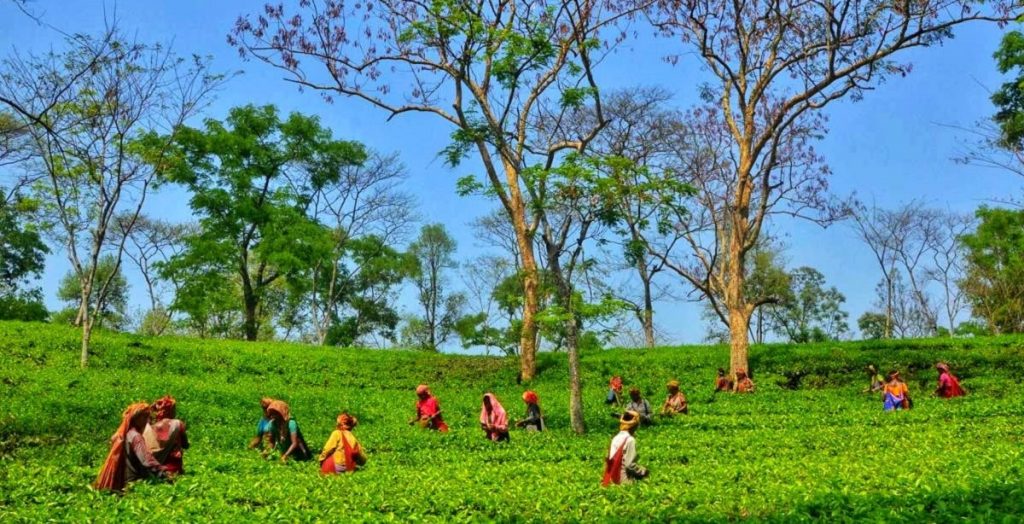By Ashis Biswas
Prospects have brightened for a new tea auction centre (TAC) in Northeast India to be located in Tripura, following recent negotiations among local trade circles and state officials.
Earlier, Indian Tea Association(ITA) authorities had suggested that NE-based tea producers , especially those operating out of the Barak Valley districts and Tripura, use the existing Srimangal tea auction centre set up in Bangladesh , not too far from India, for exports.
The ITA had prepared a white paper some time ago spelling out in detail the case for accessing the facilities at Srimangal TAC, highlighting the logistical advantages NE producers would enjoy. From the main Barak Valley tea estates/plantations, the TAC in Bangladesh was only around 100 kilometres. Given good road conditions, consignments meant for export could be transported in quick time , ensuring fulfillment of quality maintenance requirements.
However, Tripura-based trade circles feel that the state should set up its own TAC at Dharmanagar town, which enjoys good road and rail connectivity with mainland India. It is also close to Bangladesh.
Recent media reports pointed to the built-in advantages that Tripura plantation owners could take of. The overall production of tea was growing in recent times in Tripura, the average annual figure being 9 million kilograms. The quality was declared good by experts. There were some 80 estates, gardens/plantations and factories engaged with production along with small tea growers.
Tripura tea trade circles have followed up their idea with the ITA, the Tea Board and Central Government officials. Certain preparatory steps needed to be taken urgently for their proposal to carry much weight with authorities. Among these were improving the quality of local tea production generally, with special attention paid to certain varieties, ensure a steady growth in production, setting up better market linkages , etc
Agartala trade circles were also confident that Bangladeshi tea traders too would be interested to access the proposed TAC at Dharmanagar in that it would enable them to access the growing consumers’ market in the seven NE states and India as a whole. This should help Bangladeshi tea exports to increase their sales in the larger Indian market, with its strong domestic demand.
Trade circles were also studying what could be a problem of plenty for tea producers in both countries. Last year for example, Bangladesh had produced a bumper crop of 96.50 million kilograms.
In comparison the average annual production in recent years from the three Barak valley districts was healthy, at around 43 mkgs, accounting for nearly 6% of Assam’s total production.
These figures seem to counter the initial views expressed by the ITA’s white paper calling for Indian producers to access business/exports through the Srimangal TAC. There does not seem to be much of a case for Bangladeshi producers to buy Indian varieties from Barak valley, given their own large and growing domestic harvest.
Not everyone agrees. There is also a general belief that given the export-driven approach pursued by Bangladesh as the mainstay of its economic policy, Bangladeshi producers /traders would be keen to use the facilities that would be on offer at the proposed Dharmanagar TAC. On the other hand, Bangladesh has in recent years raised the import duty for Indian varieties from 30% in 2017 to 100% at present. There are legitimate concerns whether Dhaka would agree to reduce the high cess on Indian products, especially those that compete directly with Bangladesh-produced items.
As for the production from Barak valley, the ITA had also proposed that different varieties should be sent to the major greater Kolkata market in South Bengal by using the road/rail linkages between NE India and Petrapole land customs port, through Bangladesh territory. Assam government officials, it was suggested, should take up the proposal with the centre, along with the larger scheme to use the Srimangal TAC, as a special gesture to Bangladesh to ensure better bilateral trade ties.
In both Bangladesh and India, there is general optimism in the tea trade circles that despite the many problems and issues negatively affecting export prospects in recent years, eventually the ever growing domestic demand within the very large combined population would ensure the survival of tea and the cup that cheers, for years to come. (IPA Service)

 Atrocities Against Dalits In India Have Recorded Steep Rise Under Modi Regime
Atrocities Against Dalits In India Have Recorded Steep Rise Under Modi Regime 